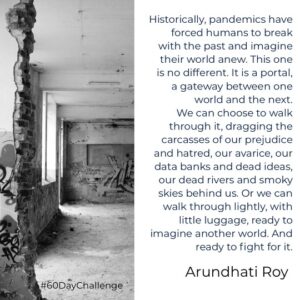 After lockdowns, quarantine and virtual schooling, the focus of educators and communities has been returning to “normal.”
After lockdowns, quarantine and virtual schooling, the focus of educators and communities has been returning to “normal.”
I’ve seen many conversations focused on “normal,” as I’m sure you have. And do we really want to return to a system with so many anomalies laid bare: equity, digital equity, agency in the wrong places, standardization, standardized testing, etc…?
I’m sure you can add your own to the list….
One of my favorite thinkers and activators is Will Richardson. He and his partner, Homa Tavangar, have designed a new resource to deepen inquiry into the “normal” question: 9 Big Questions Schools Must Answer to Avoid Going “Back to Normal” (Because “normal” wasn’t that great to begin with)
Things I love about the work: Inquiry stance. Future focused.
After laying out the context of pandemic and post-pandemic times, they offer a set of nine powerful questions, each accompanied by…
- “audit activities/questions” to guide the inquiry;
- “Towards a new normal” actions you can take that commit you (and your community) to imagining another world for learning; and
- “Resources,” providing external links to prompt deeper inquiry.
My favorite question: Who has the power? (…because I think shifting agency is the keystone of this work.)
Here’s a glimpse into what Will and Homa offer for this question:
Power relationships in the world are shifting. To what extent are learners in your school community able to pursue learning on their own terms, deciding for themselves what, when, and how to learn?
“It’s not clear, however, the extent to which these calls for a redistribution of power are really about expanding freedom or about simply increasing choices.”
Audit activities/questions: (select couple)
- Ask students, teachers, parents and others “Do you feel that you have the license to deviate from the script, to choose your own learning path?
- Create a “Learning Org Chart” that articulates how decisions are made and implemented. Where are leaders, teachers, students, parents, board members, policy makers, and school staff on the chart? What are the implications?
Toward a new normal: (select couple)
- Increase the amount of free play time that students (and teachers) have in school.
- Engage students in ongoing conversations around how they would like to be assessed on their work, and include space for self-assessment on major units or specific projects.
Resources: (select couple)
- What Do You Mean When You Say “Student Agency”? by Jennifer Davis Poon
- The Case for the Self-Driven Child by Gareth Cook
On Wednesday, May 10, Homa and Will are offering a webinar (either 8:00 AM ET or 7:00 PM ET) to go deeper into their nine question framework. You can register here if interested!
—–
❓ Provocations:
Is the present time a window of opportunity to elevate the conversation around transforming schools? What connections can you make between reopening schools and the provocations we have been exploring here?
💎 Resource:
9 Big Questions Schools Must Answer to Avoid Going “Back to Normal” (Because “normal” wasn’t that great to begin with) – by Will Richardson and Homa Tavanger (Big Question Institute)
🧠 Mindsets:
Change
Normalcy
💡 Areas:
Leadership
📣 Drop your thoughts in the comments, or in the Facebook group, and feel free to share resources. 🔥🔥🔥
- A silver lining - January 22, 2022
- Is our use of tech working against us? 🤔 - September 8, 2021
- What’s NOT going to change in the next 10 years? 🤔 - September 7, 2021